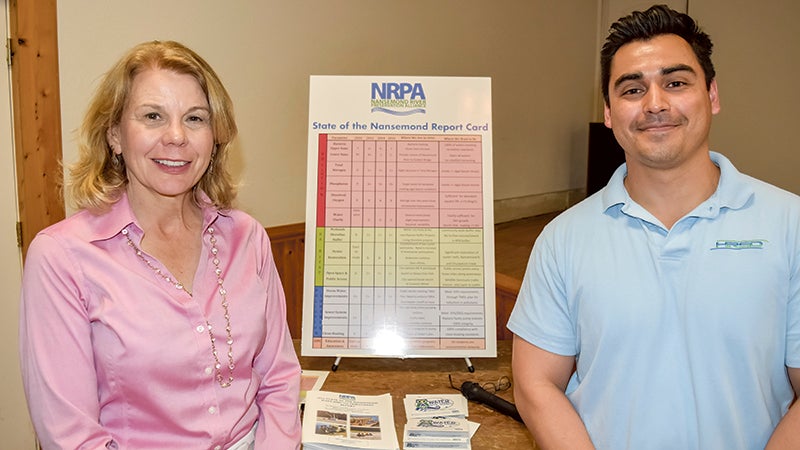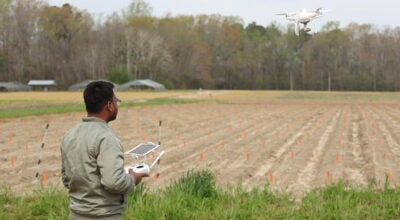Groups join river study effort
Published 10:13 pm Wednesday, April 5, 2017

- Nansemond River Preservation Alliance president and chief executive officer Elizabeth Taraski and Hampton Roads Sanitation District environmental scientist Raul Gonzalez stand beside a visual graphic for the NRPA 2016 State of the Nansemond Report Card. Lower Nansemond received a C- for pollution, while Upper Nansemond received an F.
A new collaboration to address dangerous bacteria levels in the Nansemond River was announced at a recent meeting.
“Listening to the River’s Voice” was held Tuesday at the CE&H Ruritan Club in Eclipse. More than 40 local residents and city representatives attended the meeting to learn about the new collaborative effort to remedy rising bacteria levels in the Nansemond River watershed.
The Nansemond River Preservation Alliance, Hampton Roads Sanitation District, Virginia Department of Health Division of Shellfish Sanitation, local waterman and the city of Suffolk will work together on the project.
“What we’re doing can’t be done by one organization, especially such an ambitious project to help the Nansemond River,” HRSD environmental scientist Raul Gonzalez said.
Significant portions of the Nansemond River, Chuckatuck Creek and all of Bennett’s, Bleakhorn and Knott’s creeks are closed to shellfish harvesting based on “hot spots” of coliform bacteria, an indicator of high levels of pollution, according to the 2016 State of the Nansemond River and its Tributaries Report.
Spikes in bacteria levels observed after major rainfalls resulted in additional acres of Nansemond River being closed, up to the Godwin Bridge. Significant portions of the waterways remain closed during dry periods, as well.
Gonzalez said the plan is “to systematically identify and fix human bacteria sources in the upper Nansemond River watershed,” before moving on to wildlife sources. Lab analyses and field staff and equipment are being pooled among the organizations.
The first phase identified more than 260 sites of potential bacteria sources since January during “dry weather” conditions. For comparison, a 2011 Chicago, Ill. bacteria source tracking study identified only 40 such sites, according to Gonzalez.
“We’re trying to find stuff during dry weather that’s always discharging bacteria,” he said. “When we find something, the city is going to go out and repair it immediately.”
This effort is expected to continue into 2018, after which the second phase will identify “wet weather” bacteria sources. The new approach uses the latest molecular methods and the collection knowledge of all participating organizations for adaptive source tracking, according to Gonzalez.
“We can change our approach based on our current samples,” he said.
NRPA president and chief executive officer Elizabeth Taraski said the collaboration shows great promise to remedy the hotspots of contamination.
“Collaboration is the solution,” she added.
“We’re all trying to come together for a common goal,” NRPA water quality committee chair Steve Barnum said. “It’s not just talk; we’re doing it.”
Suffolk resident Howard Martin said he thinks the effort will help save the city’s “beautiful natural resource.”
“I’m very encouraged that we have these different groups getting together to tackle this issue of cleanliness and health on the river,” he said.






